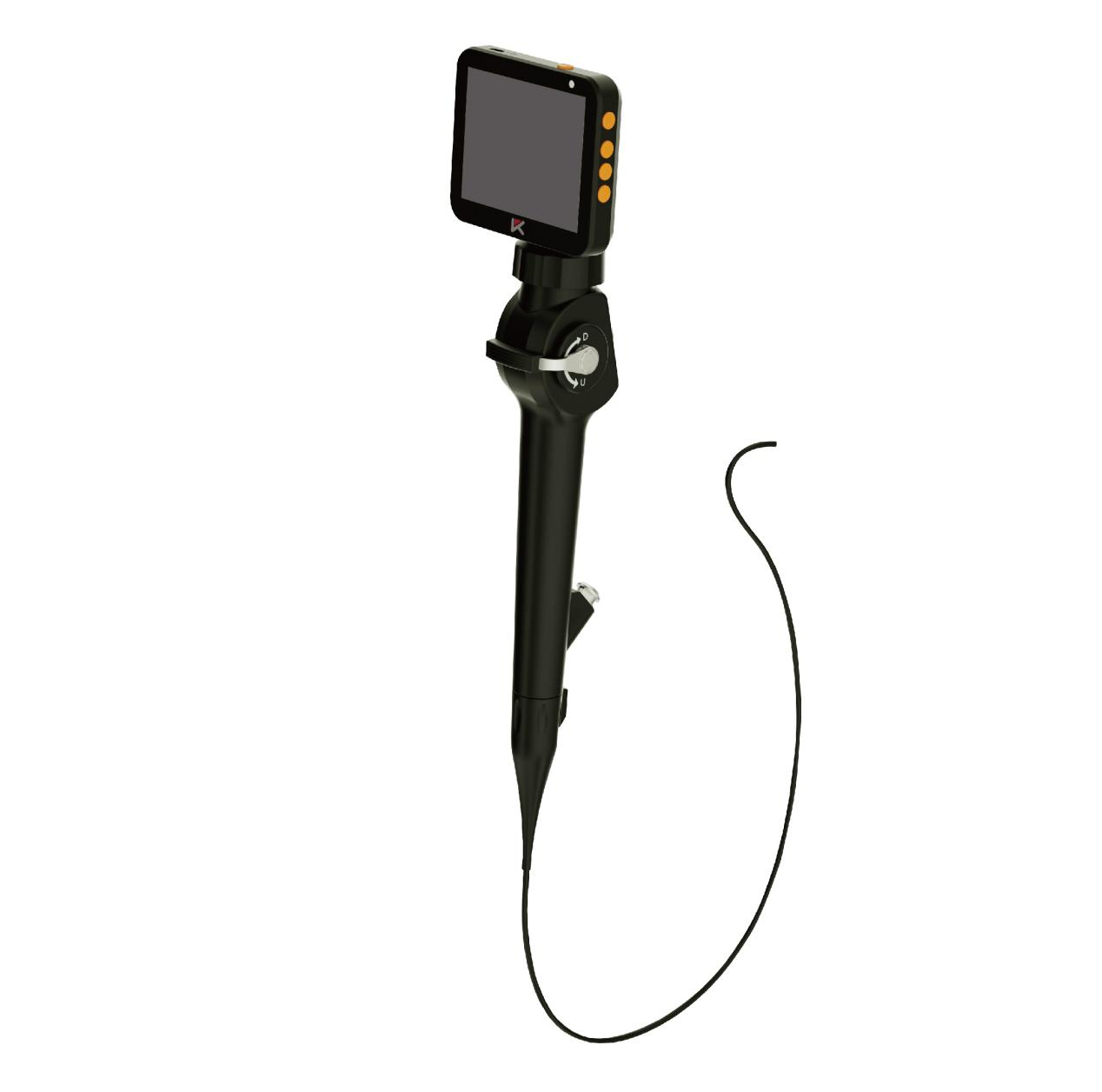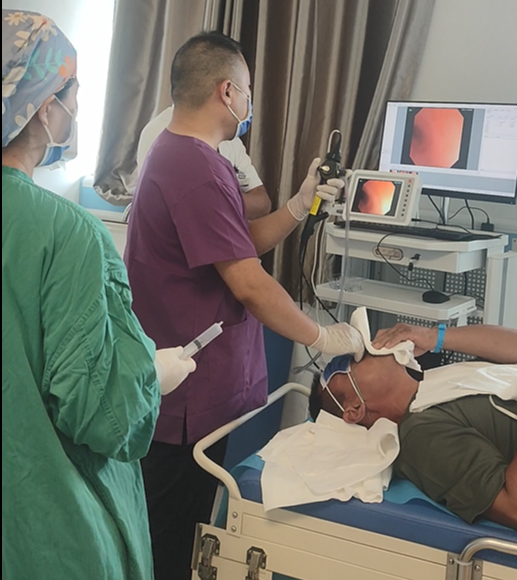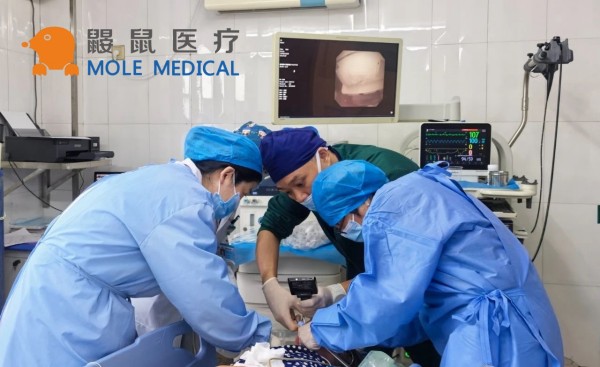Orotracheale Intubation: Essential Procedure Guide
Dec 23, 2023
Orotracheale intubation is an essential procedure practiced by healthcare professionals to protect patient airways during medical emergencies. This procedure involves inserting a tube through the mouth or nose and into the trachea to aid in breathing. Orotracheal intubation is often performed in emergency situations, such as cardiac arrest or severe respiratory distress, and is typically carried out by trained medical personnel to ensure safe, effective, and timely patient care.
Key Takeaways
- Orotracheale intubation is a vital procedure used to secure patient airways during medical emergencies.
- The procedure typically involves inserting a tube through the mouth or nose and into the trachea.
- Orotracheal intubation is often performed in emergency situations, such as cardiac arrest or severe respiratory distress.
- Healthcare professionals who perform the procedure need to be trained to ensure safe, effective, and timely patient care.
- Proper equipment selection and maintenance is essential for a safe and effective intubation procedure.
Understanding Orotracheal Intubation
Orotracheal intubation is a delicate medical procedure that involves the insertion of an endotracheal tube through the mouth and into the trachea to provide a patent airway. To ensure a safe and successful intubation, the healthcare professional must follow proper patient positioning and select the appropriate tools to assist him or her with the process.
The first step in the intubation process is positioning the patient. This involves placing the patient in the sniffing position, which aligns the oral, pharyngeal, and laryngeal axes, creating a straight path for the endotracheal tube. The healthcare professional must also ensure that the patient’s head and neck are properly stabilized to prevent movement during the procedure.
The laryngoscope and endotracheal tube are vital tools used during orotracheale intubation. The laryngoscope is used to visualize and expose the vocal cords, facilitating the placement of the endotracheal tube. Once the vocal cords are visualized, the endotracheal tube is advanced through the glottis and into the trachea. Various techniques are employed, such as the Sellick maneuver, to guide the endotracheal tube through the vocal cords.
Successful orotracheal intubation requires a careful and systematic approach. The healthcare professional must be knowledgeable in the various intubation techniques and select the best method based on the patient’s condition. Common techniques include direct and indirect laryngoscopy, video laryngoscopy, and fiber-optic intubation.
By mastering these specific steps and techniques, healthcare professionals can safely perform orotracheal intubation and ensure successful patient outcomes.
Equipment Needed for Orotracheal Intubation
Orotracheal intubation requires specialized equipment to achieve optimal results. The following equipment is essential:
Laryngoscope blades: These specialized blades aid in visualizing the vocal cords and positioning the endotracheal tube into the trachea. Healthcare professionals must choose the right size and type of laryngoscope blade for each patient.
Endotracheal tubes: These tubes facilitate the passage of air from the mouth or nose into the lungs and must be selected appropriately based on the patient’s age, gender, and medical condition. They are commonly made of polyvinyl chloride, silicone, or red rubber material.
Stylets: These long, thin instruments are designed to be inserted into the endotracheal tube to aid in guiding it into the trachea. Healthcare professionals must ensure stylets are compatible with endotracheal tubes and laryngoscopes and chosen according to patient need.
Suction Devices: These include Yankauer and tonsillar suctions, which help with secretions and provide clear visualization during the procedure. The healthcare professional must choose and maintain these devices to reduce infection rates.
Correct selection, maintenance, and management of all of these instruments and devices are essential to safe and effective orotracheal intubation.
Safety Measures during Orotracheal Intubation

Performing orotracheale intubation comes with potential risks and complications that may affect the patient’s outcome. This is why healthcare professionals must implement proper safety measures during the procedure to avoid accidents and minimize possible complications.
Patient Assessment
Prior to the procedure, healthcare providers must perform a careful assessment of the patient’s airway, breathing, and circulation. This step is essential to identify any risk factors that may increase complications during intubation. Data obtained from physical examination, medical history, and diagnostic tests should help guide the most appropriate treatment plan.
Infection Control
Proper infection control measures are also crucial for ensuring the safety of both patients and healthcare professionals. Healthcare workers must wear appropriate PPE, including gloves, mask, and gown, to avoid contamination from bodily fluids and minimize the transmission of infections.
Continuous Monitoring
Monitoring patients throughout the orotracheal intubation procedure is critical for detecting complications early and promptly acting to prevent adverse events. Continuous monitoring of the patient’s vital signs, ECG, and oxygen levels should be performed throughout the procedure and continued even after the intubation is completed.
Adherence to Intubation Guidelines
Adherence to intubation guidelines has been proven to reduce the incidence of complications during orotracheal intubation procedures. To ensure safety, healthcare professionals must follow established guidelines and protocols, including tube size selection, the use of stylets, cuff pressure monitoring, and tube placement confirmation via auscultation or end-tidal CO2 detection.
Troubleshooting Orotracheal Intubation
Despite taking careful precautions and following proper procedures, complications can still arise during orotracheal intubation. As a result, healthcare professionals must be equipped to troubleshoot any difficulties that may arise during intubation.
One common difficulty during intubation is dealing with difficult airways. In these situations, healthcare professionals can utilize alternative techniques such as the use of video laryngoscopes or supraglottic airway devices to aid in the process.
Another potential complication during intubation is aspiration, where the patient inhales stomach contents into the airway. It is essential to suction the patient’s airway regularly to prevent this occurrence and to have an endotracheal tube cuff inflated at all times to prevent regurgitation.
There is also a risk of tube dislodgment during intubation, which can be due to accidental extubation or problems with tube placement. It is crucial to ensure that the endotracheal tube is secured correctly and to monitor the patient’s respiratory and oxygen saturation levels continually.
Overall, by understanding potential complications and troubleshooting techniques, healthcare professionals can perform orotracheal intubation more effectively and ensure that patients receive the best possible care.
Conclusion
Performing orotracheale intubation is a crucial procedure that requires proper training, experience, and selection of appropriate equipment. By following the steps outlined in this guide, healthcare professionals can minimize risks and ensure the best possible patient outcomes.
It is important to remember that orotracheal intubation is not without its risks and complications. However, by adhering to safety measures and guidelines, such as continuous patient monitoring, infection control, and proper positioning, the likelihood of complications can be reduced.
Furthermore, in the event of challenges or complications arising during the intubation process, healthcare professionals can turn to the troubleshooting techniques discussed in this guide for guidance.
In summary, orotracheale intubation plays a crucial role in ensuring airway patency and oxygenation during emergency situations. By having a good understanding of the procedure, equipment, safety measures, and troubleshooting techniques, healthcare professionals can perform intubation with confidence.
Categories
Latest Articles

Disposable Nephroscopes: Redefining Safety & Efficiency in Urology
Introduction The shift towards minimally invasive urological surgery has found a pivotal ally: the disposable nephroscope. As traditional reusable scopes grapple with persistent biofilm contamination risks and soaring sterilization costs, the global medical community is rapidly adopting single-use solutions. This article analyzes the clinical value, technological evolution, and dynamic innovation landscape driving this transformative shift. ... Read more

Disposable Video Laryngoscope Blades: The Ultimate Solution for Preventing Cross-Contamination
In the operating room, as the cold light of a video laryngoscope illuminates a patient’s airway, an age-old medical challenge is being redefined: How can life-saving instruments avoid becoming vectors of infection? Jiangsu MoleMedical drives an innovative safety revolution—replacing reusable devices with single-use, sterile laryngoscope blades that create a pure barrier for critical airways. Traditional video ... Read more
-2.jpg)
FDA & CE Approved Video Laryngoscope: What Makes It Stand Out?
Introduction In high-pressure emergencies and precision-driven operating rooms, video laryngoscopy is revolutionizing airway management. Mole Medical’s FDA and CE-certified technology replaces tactile-dependent “blind intubation” with real-time visual navigation – enhancing safety, accuracy, and clinical outcomes worldwide. Why Certification Matters Mole Medical’s dual certifications validate its global compliance and performance: FDA Clearance: Rigorous validation of safety/efficacy ... Read more

Mole Medical Showcases Advanced Endoscopy Solutions at CMEF Autumn 2025, Driving Global Partnerships
Guangzhou, China – September 26-29, 2025 – The 92nd China International Medical Equipment Fair (CMEF Autumn) concluded successfully on September 29th at the Canton Fair Complex in Guangzhou. Mole Medical Technology Co., Ltd. (Mole Medical) made a significant impact at the event, drawing global medical professionals and partners to its booth (Hall 2.1, Stand Q24) ... Read more

How to Use Disposable Ureteroscopes Safely and Efficiently
In the field of urology, the application of disposable electronic ureteral-kidney pelvis endoscopy catheters is leading the technological innovation in minimally invasive surgeries. According to the 2024 multi-center research data from China’s urology department, among the over 5,000 surgeries included, the patient group using disposable catheters performed significantly better in key indicators such as operation ... Read more



